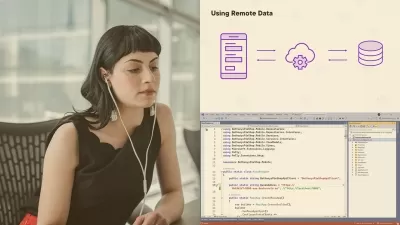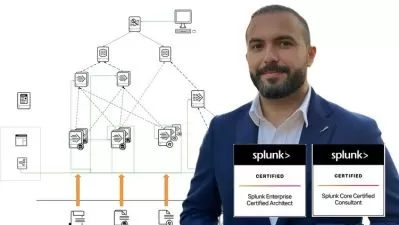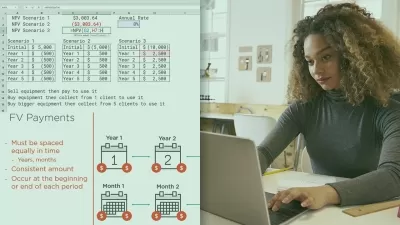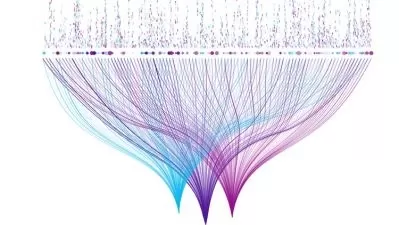Advanced Data Science Techniques in SPSS
Bogdan Anastasiei
6:41:18
Description
Hone your SPSS skills to perfection - grasp the most high level data analysis methods available in the SPSS program.
What You'll Learn?
- Perform advanced linear regression using predictor selection techniques
- Perform any type of nonlinear regression analysis
- Make predictions using the k nearest neighbor (KNN) technique
- Use binary (CART) trees for prediction (both regression and classification trees)
- Use non-binary (CHAID) trees for prediction (both regression and classification trees)
- Build and train a multilayer perceptron (MLP)
- Build and train a radial basis funcion (RBF) neural network
- Perform a two-way cluster analysis
- Run a survival analysis using the Kaplan-Meier method
- Run a survival analysis using the Cox regression
- Validate the predictive techniques (KNN, trees, neural networks) using the validation set approach and the cross-validation
- Save a predictive analysis model and use it for predictions on future new data
Who is this for?
What You Need to Know?
More details
DescriptionBecome a Top Performing Data Analyst – Take This Advanced Data Science Course in SPSS!
Within a few days only you can master some of the most complex data analysis techniques available in the SPSS program. Even if you are not a professional mathematician or statistician, you will understood these techniques perfectly and will be able to apply them in practical, real life situations.
These methods are used every day by data scientists and data miners to make accurate predictions using their raw data. If you want to be a high skilled analyst, you must know them!
Without further ado, let’s see what you are going to learn…
- Stepwise regression analysis, a technique that helps you select the best subset of predictors for a regression analysis, when you have a big number of predictors. This way you can create regression models that are both parsimonious and effective.
- Nonlinear regression analysis. After finishing this course, you will be able to fit any nonlinear regression model using SPSS.
- K nearest neighbor, a very popular predictive technique used mostly for classification purposes. So you will learn how to predict the values of a categorical variable with this method.
- Decision trees. We will approach both binary (CART) and non-binary (CHAID) trees. For each of these two types we will consider two cases: the case of response dependent variables (regression trees) and the case of categorical response variables (classification trees).
- Neural networks. Artificial neural networks are hot now, since they are a suitable predictive tool in many situations. In SPSS we can train two types of neural network: the multilayer perceptron (MLP) and the radial basis function (RBF) network. We are going to study both of them in detail.
- Two-step cluster analysis, an effective grouping procedure that allows us to identify homogeneous groups in our population. It is useful in very many fields like marketing research, medicine (gene research, for example), biology, computer science, social science etc.
- Survival analysis. If you have to estimate one of the following: the probable time until a certain event happens, what percentage of your population will suffer the event or which particular circumstances influence the probability that the event happens, than you need to apply on of the survival analysis method studied here: Kaplan-Meier or Cox regression.
For each analysis technique, a short theoretical introduction is provided, in order to familiarize the reader with the fundamental notions and concepts related to that technique. Afterwards, the analysis is executed on a real-life data set and the output is thoroughly explained.
Moreover, for some techniques (KNN, decision trees, neural networks) you will also learn:
- How to validate your model on an independent data set, using the validation set approach or the cross-validation
- How to save the model and use it for make predictions on new data that may be available in the future.
Join right away and start building sophisticated, in-demand data analysis skills in SPSS!
Â
Â
Who this course is for:
- students
- PhD candidates
- academic researchers
- business researchers
- University teachers
- anyone who is passionate about data analysis and data science
Become a Top Performing Data Analyst – Take This Advanced Data Science Course in SPSS!
Within a few days only you can master some of the most complex data analysis techniques available in the SPSS program. Even if you are not a professional mathematician or statistician, you will understood these techniques perfectly and will be able to apply them in practical, real life situations.
These methods are used every day by data scientists and data miners to make accurate predictions using their raw data. If you want to be a high skilled analyst, you must know them!
Without further ado, let’s see what you are going to learn…
- Stepwise regression analysis, a technique that helps you select the best subset of predictors for a regression analysis, when you have a big number of predictors. This way you can create regression models that are both parsimonious and effective.
- Nonlinear regression analysis. After finishing this course, you will be able to fit any nonlinear regression model using SPSS.
- K nearest neighbor, a very popular predictive technique used mostly for classification purposes. So you will learn how to predict the values of a categorical variable with this method.
- Decision trees. We will approach both binary (CART) and non-binary (CHAID) trees. For each of these two types we will consider two cases: the case of response dependent variables (regression trees) and the case of categorical response variables (classification trees).
- Neural networks. Artificial neural networks are hot now, since they are a suitable predictive tool in many situations. In SPSS we can train two types of neural network: the multilayer perceptron (MLP) and the radial basis function (RBF) network. We are going to study both of them in detail.
- Two-step cluster analysis, an effective grouping procedure that allows us to identify homogeneous groups in our population. It is useful in very many fields like marketing research, medicine (gene research, for example), biology, computer science, social science etc.
- Survival analysis. If you have to estimate one of the following: the probable time until a certain event happens, what percentage of your population will suffer the event or which particular circumstances influence the probability that the event happens, than you need to apply on of the survival analysis method studied here: Kaplan-Meier or Cox regression.
For each analysis technique, a short theoretical introduction is provided, in order to familiarize the reader with the fundamental notions and concepts related to that technique. Afterwards, the analysis is executed on a real-life data set and the output is thoroughly explained.
Moreover, for some techniques (KNN, decision trees, neural networks) you will also learn:
- How to validate your model on an independent data set, using the validation set approach or the cross-validation
- How to save the model and use it for make predictions on new data that may be available in the future.
Join right away and start building sophisticated, in-demand data analysis skills in SPSS!
Â
Â
Who this course is for:
- students
- PhD candidates
- academic researchers
- business researchers
- University teachers
- anyone who is passionate about data analysis and data science
User Reviews
Rating
Bogdan Anastasiei
Instructor's Courses
Udemy
View courses Udemy- language english
- Training sessions 78
- duration 6:41:18
- English subtitles has
- Release Date 2023/10/01





















